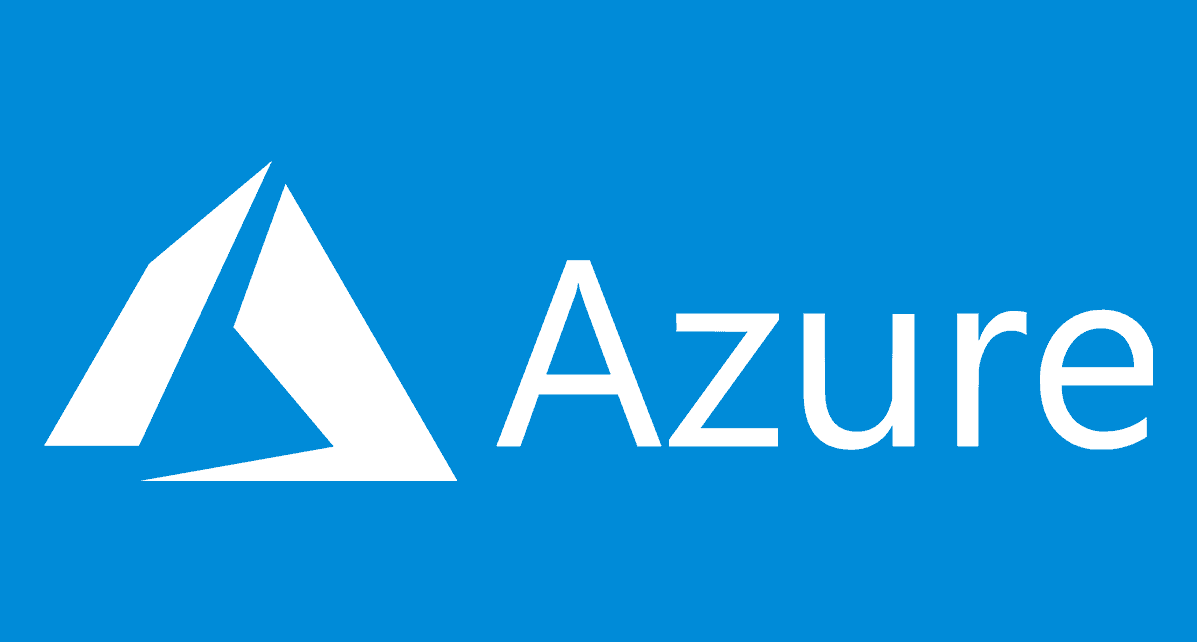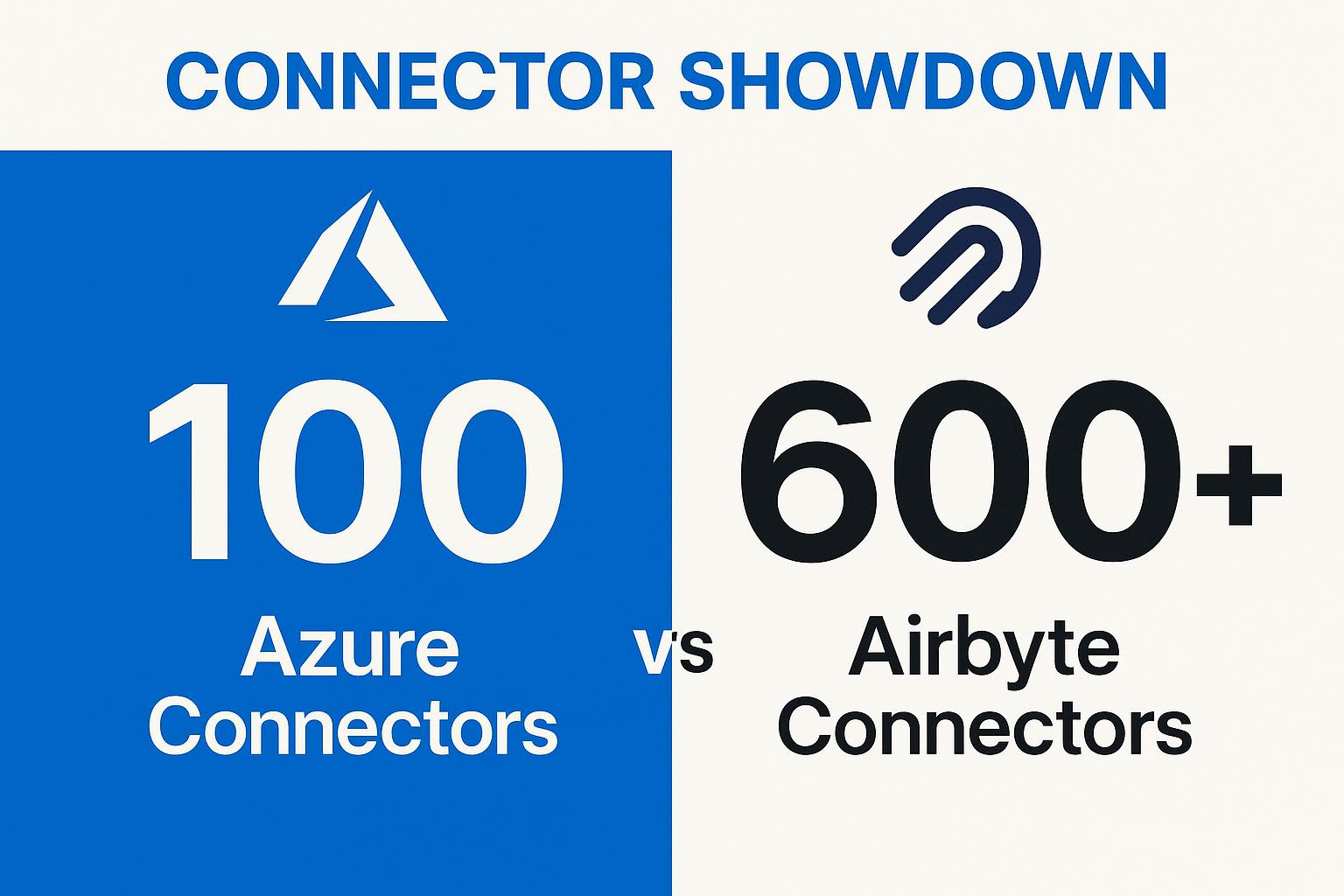Is Microsoft Azure a True Hybrid Cloud Solution?
Summarize this article with:
✨ AI Generated Summary
Azure's hybrid cloud primarily extends its control plane into on-premises environments, causing vendor lock-in, data sovereignty issues, and operational overhead due to telemetry and policy metadata flowing to Microsoft regions. In contrast, Airbyte Enterprise Flex offers a true hybrid cloud by fully separating control and data planes, ensuring sensitive data remains on-premises with over 600 connectors, built-in governance, and significantly lower costs. Enterprises benefit from faster deployment, compliance alignment, and scalable operations without the limitations and hidden costs of Azure's model.
Teams in finance and healthcare operate under strict requirements. Patient records, trading data, and audit logs must stay within their own controlled environments, yet stakeholders continue to expect the flexibility and scalability that come with the cloud. Microsoft promotes Azure as a hybrid solution, but is Azure a hybrid cloud that truly delivers on this promise? In practice, its approach often focuses on extending Azure tooling into on-prem environments rather than enabling full control across them.
The risks are significant. When telemetry or policy metadata drifts into foreign regions, organizations face GDPR penalties. If workloads suddenly spill over into pay-as-you-go resources, budgets can derail mid-quarter. And even a strong compliance posture can crumble if audit trails reside in another provider's environment.
In short, Azure delivers hybrid capabilities, but its cloud-first control plane introduces limitations that must be carefully assessed before deployment.
What Does Hybrid Cloud Actually Mean?
A hybrid cloud separates the control plane from the data plane:
- Control plane: Sets policy, orchestrates workloads, and monitors health
- Data plane: Handles actual data movement and compute
When these layers live in different environments, you keep sensitive data wherever regulations or latency demand while managing everything from a single pane of glass.
True hybrid architecture hinges on customer sovereignty. You decide where each data plane runs while the vendor hosts a control plane that delivers upgrades, governance, and automation. Because only metadata flows to the control plane, sensitive records never leave your walls.
This model demands deployment flexibility. You should shift a workload from on-premises to cloud without rewriting pipelines or losing features. Hybrid differs from:
- Multi-cloud: Juggling several public clouds
- Multi-region: Having data centers in multiple regions
Those scenarios may still lock the control and data planes together.
Consider IBM Cloud Satellite: IBM runs the control plane, while enterprises deploy Satellites on any infrastructure they own, preserving locality without giving up centralized management. Done right, hybrid lets you keep control of your data and still operate with cloud-level agility.
How Does Azure Approach Hybrid Cloud?

Microsoft's hybrid cloud capabilities are delivered through its core products that connect workloads in your data centers to Microsoft's global control plane.
Azure Arc
Azure Arc handles management across environments. Install Arc agents on your servers or Kubernetes clusters, and those resources register with Azure Resource Manager. You get policy, RBAC, and monitoring through the familiar portal, but configuration data, logs, and policy state all travel back to Azure's regions. Day-to-day governance depends on continued connectivity to the cloud control plane.
Azure Stack
Azure Stack brings selected Azure services to your data center for latency-sensitive or regulated workloads. You run virtual machines, containers, and Functions on certified hardware, but updates, marketplace images, and license activation flow through Azure. Microsoft requires linking each Stack installation to an Azure subscription, which means telemetry and billing metadata leave your premises despite the "local" runtime.
Azure Data Factory
Azure Data Factory moves data across environments. A self-hosted integration runtime copies tables between on-premises databases and cloud stores, but every pipeline definition, scheduling event, and monitoring alert gets orchestrated in Azure. This simplifies setup while creating sovereignty challenges because orchestration data lives outside your jurisdiction.
These services depend on Microsoft's back-end infrastructure, so compliance attestations come from Microsoft rather than controls you operate. Licensing follows Azure's consumption model with higher costs as you add:
- More Arc-managed servers
- Additional Stack capacity
- Increased Data Factory activity
Where Azure's Model Falls Short for Enterprises
Azure's hybrid cloud promise looks attractive on the whiteboard, but constraints surface quickly once you deploy.
Vendor Lock-In
You rely on Microsoft's control plane for almost every action. Resources managed through Arc must register with Azure Resource Manager, and billing, policy, and identity all flow through Microsoft accounts. Exiting means untangling:
- Templates across multiple subscriptions
- Role assignments and permissions
- Proprietary agents on every server
This creates classic vendor lock-in that dictates both technology choices and pricing.
Data Sovereignty Challenges
Even when workloads stay on-premises, Arc continuously ships metadata and logs to Microsoft regions for governance and monitoring. For teams operating under GDPR or sector-specific residency rules, cross-border telemetry creates audit headaches regardless of how carefully you isolate data.
Operational Overhead
Standing up a single Arc-enabled server looks simple. Running hundreds means maintaining:
- Agents across every site
- Network ingress rules
- Certificate renewal cycles
Adding Azure Stack amplifies patching cycles and hardware dependencies. Engineers spend disproportionate time chasing "hybrid drift" rather than delivering new features.
Limited Integration Breadth
Data Factory supports many connectors, but anything outside the catalog forces custom code or costly ISV add-ons. Policy automation is improving for Azure resources, yet still lags for non-Azure systems, creating gaps you must close with third-party tooling and additional budget.
Regulated Sector Impact
The table below shows how Azure's hybrid infrastructure constraints affect different industries:
These hidden costs never appear in Azure calculators but materialize the moment you scale beyond a pilot.
What Makes Airbyte Enterprise Flex a True Hybrid Cloud?

Airbyte Enterprise Flex meets the strictest definition of hybrid by cleanly splitting the control plane from the data plane.
You run pipelines where your data already lives while a managed control plane handles orchestration and upgrades. Because only metadata about jobs flows to the Airbyte SaaS layer, sensitive records never cross your perimeter, giving you immediate alignment with GDPR, HIPAA, and other residency mandates.
Complete Feature Parity
Flex provides the same 600+ connectors you use in Airbyte Cloud, so feature parity never becomes a migration project. Whether you're syncing Oracle tables or streaming events from Kafka, every connector, transformation, and API call comes from one open-source codebase. This eliminates the compatibility gaps that often appear between on-prem and cloud editions of other platforms.
Built-In Governance
Enterprise governance capabilities come standard with Flex:
- Access control: RBAC and SSO with Okta or Azure Entra ID keep access tightly scoped
- Secret management: External secrets management lets you store credentials in your own vault
- PII protection: Column-level hashing masks PII before it leaves the source system
These controls satisfy auditors without adding custom tooling, and they scale as your footprint grows.
Key Deployment Advantages
The following table compares deployment characteristics between Azure and Airbyte Flex:
By separating orchestration from data movement, Flex sidesteps the lock-in and cross-border metadata issues that trail Azure Arc or Stack.
Side-by-Side Comparison: Azure vs. Airbyte Enterprise Flex

Production environments demand clarity on how Microsoft hybrid cloud offerings measure against a platform built for strict data sovereignty. This comparison focuses on what actually matters when compliance and control are non-negotiable.
Across every dimension that matters to compliance-heavy teams, Airbyte Enterprise Flex delivers greater control and lower risk.
What Outcomes Can Enterprises Expect with Airbyte Enterprise Flex?
Real-world deployments show measurable improvements across compliance, cost, and speed:
- Compliance alignment: The hybrid control plane keeps your data plane inside your environment, aligning with GDPR, HIPAA, ITAR, and upcoming DORA mandates while accessing all 600+ connectors
- Cost reduction: Customers switching from legacy ETL report 60-80% lower infrastructure and operations spend through capacity-based pricing and reuse of existing hybrid infrastructure
- Processing scale: Airbyte Enterprise Flex customers collectively move over two petabytes of data daily across production workloads
- Deployment speed: The fully managed control plane puts new deployments live in days rather than months
Feature parity across all deployment models lets healthcare teams build sub-minute clinical dashboards, financial services keep fraud models current, and manufacturers stream SAP logs in near real time without rewriting pipelines.
Ready to Choose a Hybrid That Actually Delivers?
Is Azure a hybrid cloud that fits your sovereignty needs? While Microsoft's hybrid model keeps you tied to their control plane and pricing structure, Airbyte Enterprise Flex delivers true hybrid cloud solutions for on-premises integration with managed orchestration, complete data sovereignty, and 600+ connectors across all deployment models.
Talk to Sales about replacing expensive Azure deployments with hybrid integration built for sovereignty.
Frequently Asked Questions
What is the difference between hybrid and multi-cloud?
A hybrid cloud combines on-prem and cloud systems under one control. Multi-cloud spreads workloads across providers without shared governance. Hybrid cloud solutions for on-premises integration let you choose where each workload runs, while multi-cloud often creates more management complexity.
Why does Azure's control plane create compliance challenges?
Azure's control plane runs in Microsoft regions, so telemetry and audit data leave your environment. This can break GDPR or HIPAA rules because compliance teams can't control where that metadata goes.
How does Airbyte Enterprise Flex keep data local?
Airbyte Flex separates orchestration from data movement. Only job metadata goes to the managed layer, while all records stay in your own environment. This approach to hybrid infrastructure keeps data under your full control.
Can I migrate from Azure Data Factory to Airbyte Flex easily?
Yes. Airbyte Flex includes 600+ connectors covering major sources. You can map existing Data Factory pipelines and keep all features without losing coverage or control.

.webp)
.png)